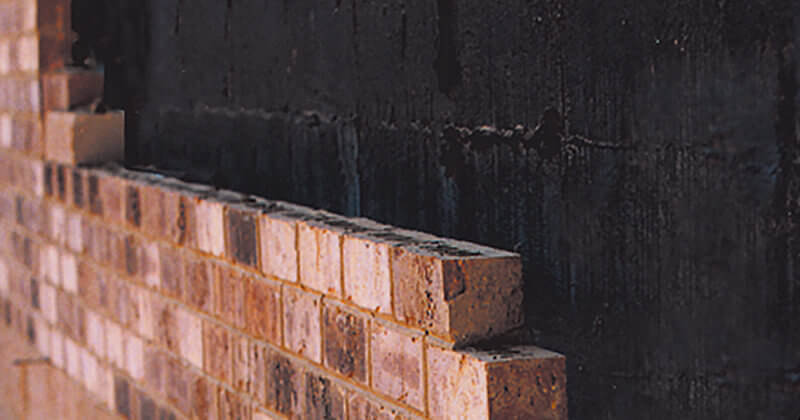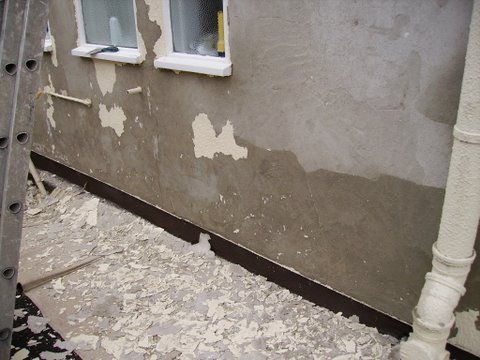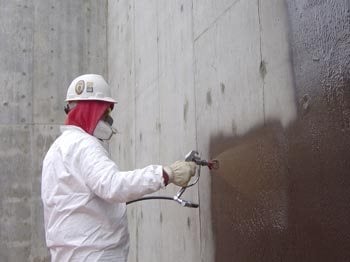Essential methods for mould removal newcastle that actually help
Wiki Article
Checking Out the Various Methods and Solutions for Effective Damp Proofing
Wetness in structures positions considerable obstacles to both architectural stability and interior air quality. Numerous strategies and remedies have arised to fight this prevalent issue. From conventional damp-proof membrane layers to ingenious chemical therapies, each technique supplies one-of-a-kind advantages. Comprehending these alternatives is essential for efficient moisture control. Nonetheless, choosing the appropriate option relies on details building problems and requirements, prompting additional expedition into the most reliable wet proofing methods available.Comprehending the Sources Of Moisture
Moisture can occur from numerous sources, recognizing these reasons is essential for reliable remediation. Typically, dampness stems from three primary resources: increasing moist, permeating wet, and condensation. Increasing moist occurs when groundwater travels up with permeable materials, such as block or stone, usually because of an absence of a reliable obstacle (damp specialist newcastle). Penetrating damp is generally triggered by outside elements, including roofing system leaks, malfunctioning gutters, or damaged wall surfaces, allowing water to penetrate a home. Condensation, on the various other hand, results from excess moisture airborne, often intensified by inadequate air flow and temperature level distinctions, resulting in water beads basing on surfaces. Recognizing these underlying issues is necessary, as each kind of moisture requires a tailored method for remediation. Correct evaluation assists in establishing the most effective solutions, ultimately securing the architectural integrity of a building and improving indoor air qualityStandard Damp-Proof Membranes

Chemical Damp-Proofing Solutions
Chemical damp-proofing options offer a cutting-edge technique to stop moisture intrusion in buildings. These approaches commonly entail the application of fluid chemicals that pass through stonework and create a barrier versus increasing moist. Typically utilized chemicals include silanes, siloxanes, and various other water-repellent representatives that respond with surface area materials to develop a hydrophobic layer.The application procedure generally needs boring openings right into the walls, injecting the chemical remedy, and permitting it to heal. This technique is specifically helpful for older structures where standard damp-proof membrane layers may be unwise. Moreover, chemical damp-proofing can be much less turbulent and extra affordable than extensive remodelling projects.While reliable, these remedies depend upon appropriate application and ecological problems for peak efficiency. Regular upkeep and monitoring are necessary to guarantee the durability of the damp-proofing therapy. In general, chemical damp-proofing stands for a functional option for protecting structures versus moisture-related damagesCavity Wall Building Strategies
Cavity wall building and construction techniques use many advantages, specifically in moisture control and energy effectiveness. By incorporating an air space in between 2 layers of stonework, these wall surfaces successfully mitigate water ingress while improving insulation. This mix not just protects structures from dampness however additionally adds to reduced energy usage.Advantages of Tooth Cavity Walls
When taking into consideration effective damp proofing methods, the advantages of tooth cavity wall surfaces attract attention prominently. Tooth cavity wall surfaces are composed of 2 different layers, creating an air gap that effectively decreases wetness infiltration. This style lessens the danger of wetness, as the external wall surface works as an obstacle versus rainfall and water access. Additionally, cavity walls enhance thermal insulation, which adds to power performance by reducing warmth loss. They additionally provide sound insulation, assisting to create a quieter interior environment. The air space allows for ventilation, which aids in dampness control and reduces the possibility of mold development. These advantages not only enhance the total comfort of a structure however likewise contribute to its durability and architectural stability.Moisture Control Methods
Effective moisture control methods are crucial in cavity wall surface building to guarantee long-lasting defense versus dampness. One primary technique includes the incorporation of weep openings, which help with water drainage from the dental caries, stopping build-up. In addition, making use of breathable membrane layers can aid handle wetness degrees while allowing trapped vapor to get away. Correct placement of insulation is likewise important, as it needs to not obstruct water drainage courses. Furthermore, ensuring that the outer leaves of the tooth cavity wall surface are created with waterproof materials enhances general longevity. Routine upkeep checks are vital to identify any obstructions or damage early, securing the framework's honesty. Ultimately, a combination of these methods creates a durable protection versus moisture breach in dental caries wall surfaces.
Insulation and Power Performance
Insulation plays an essential duty in boosting power effectiveness within cavity wall construction. By incorporating insulating products, these wall surfaces produce a thermal barrier that reduces heat loss and reduces energy intake. Reliable insulation not just assists maintain a stable indoor temperature level however also alleviates the threat of dampness, as it prevents condensation within the wall surface cavity. Different strategies, such as the use of stiff foam boards or mineral wool, can be employed to achieve optimal insulation performance. In addition, correct installation is important to guarantee that spaces and gaps are minimized, which can or else compromise power click here efficiency. Inevitably, a well-insulated tooth cavity wall adds considerably to overall sustainability and decreases heating & cooling costs for home owners.Outside Damp Proofing Methods
Outside damp proofing approaches are important for shielding frameworks from wetness seepage. Two effective strategies include the application of water resistant membrane layers and the installment of French drains pipes. These solutions assist minimize water build-up and protect the integrity of buildings.Waterproof Membrane Layer Application
While various techniques exist for protecting against wetness ingress, the application of water resistant membrane layers remains an extremely effective outside moist proofing strategy. These membranes are normally made from products such as polyethylene, rubber, or modified bitumen, offering a durable obstacle versus water penetration. The installation process includes using the membrane layer to the external surface areas of walls or structures, ensuring total protection to stop leakages. Correct bond and sealing at joints are crucial to optimizing efficiency. Water-proof membranes can be applied in different types, consisting of fluid layers and sheet membrane layers, enabling adaptability based on the specific requirements of the framework. This approach not just secures structures from moisture however additionally boosts their longevity and structural integrity.French Drain Setup
One efficient method for managing groundwater and avoiding wetness build-up around a structure's foundation is the installation of a French drain. This water drainage system contains a trench loaded with crushed rock and a perforated pipe that redirects surface area water far from the foundation. Appropriate setup needs mindful preparation, guaranteeing that the drainpipe slopes away from the structure to help with optimal water flow. In addition, the place of the drainpipe is crucial; it ought to be positioned in locations prone to merging or excess wetness. Routine upkeep, consisting of cleaning particles from the gravel and ensuring the pipe stays unobstructed, is important for long-term efficiency. Ultimately, a well-installed French drainpipe can greatly lower the risk of water-related concerns in basements and structures.Inside Waterproofing Approaches
Inside waterproofing approaches are important for shielding a building's inside from moisture infiltration and prospective water damages. These methods normally involve the application of customized materials and strategies created to create a dampness barrier within the framework. One common strategy is making use of water-proof finishings or sealants on walls and floorings, which avoid dampness from permeating surfaces.Additionally, installing interior drainage systems, such as sump pumps, can properly handle water buildup in basements and crawl spaces. One more technique includes the usage of vapor obstacles, which are installed to prevent wetness motion from the ground right into living spaces.Moreover, dealing with any type of cracks or voids in wall surfaces or structures with proper sealants assures a complete defense versus water breach. By carrying out these interior waterproofing techniques, building proprietors can substantially reduce the risk of mold growth, architectural damage, and other moisture-related concerns. Appropriate implementation of these techniques is crucial for lasting security and building integrity.Normal Upkeep and Examination Practices
Routine upkeep and assessment practices are vital for ensuring the lasting performance of damp proofing services in any type of building. Regular checks allow homeowner to identify very early indicators of dampness invasion, such as peeling paint, mold growth, and musty smells. These indications can signal underlying problems that need prompt attention.Inspections must be performed at the very least yearly, concentrating on prone locations like basements, crawl areas, and exterior wall surfaces. During these analyses, homeowner ought to analyze sealants, drainage systems, and air flow to validate they operate correctly.Additionally, preserving downspouts and gutters is crucial, as blocked systems can lead to water buildup near the foundation. Applying a normal upkeep timetable, in addition to timely repair services, can substantially prolong the life expectancy of moist proofing procedures and safeguard the architectural stability of the building. Positive procedures eventually add to the total wellness and safety of the living setting.Regularly Asked Questions
Just How Lengthy Does Damp Proofing Usually Last?
The duration of moist proofing performance varies, usually lasting in between 20 to half a century. Elements such as application top quality, environmental conditions, and upkeep practices considerably influence the durability of the wet proofing treatment.
Can I Damp Evidence My Home Myself?
The private pondered the expediency of do it yourself damp proofing. With appropriate study and the appropriate products, it is possible. Nonetheless, they also identified the significance of expert assistance to guarantee durable efficiency and avoid future concerns.What Are the Indicators of Inefficient Damp Proofing?
Signs of inefficient damp proofing consist of persistent stuffy odors, noticeable mold development, peeling paint, moist spots on walls, and timber decay - damp proofing newcastle. House owners ought to resolve these problems quickly to stop additional damages and health problemsDoes Damp Proofing Affect Indoor Air Top Quality?

Just How Much Does Specialist Damp Proofing Expense?
Specialist moist proofing prices differ considerably, normally varying from $1,000 to $5,000 relying on the residential or commercial property's dimension, the extent of the damp issue, and picked approaches. Each situation needs a customized evaluation for accurate prices. Generally, wetness stems from three main resources: increasing moist, penetrating wet, and condensation. When taking into consideration effective wet proofing methods, the benefits of tooth cavity wall surfaces stand out prominently. Outside moist proofing methods are important for shielding structures from wetness seepage. While various techniques exist for preventing moisture access, the application of waterproof membranes remains an extremely reliable exterior wet proofing method. Indicators of inadequate wet proofing consist of relentless stuffy smells, noticeable mold growth, peeling paint, damp patches on walls, and timber degeneration.Report this wiki page